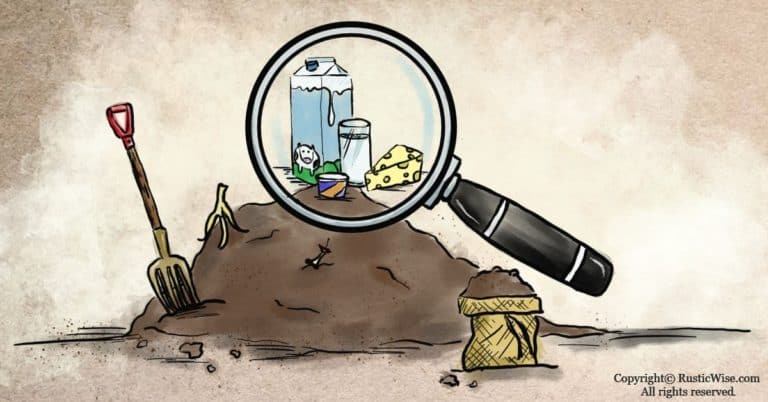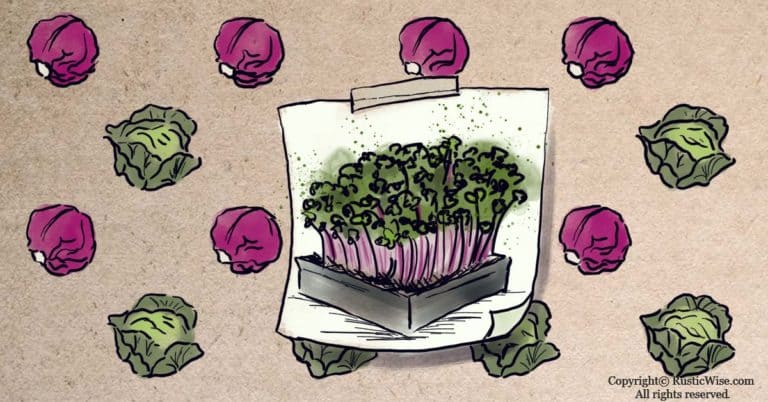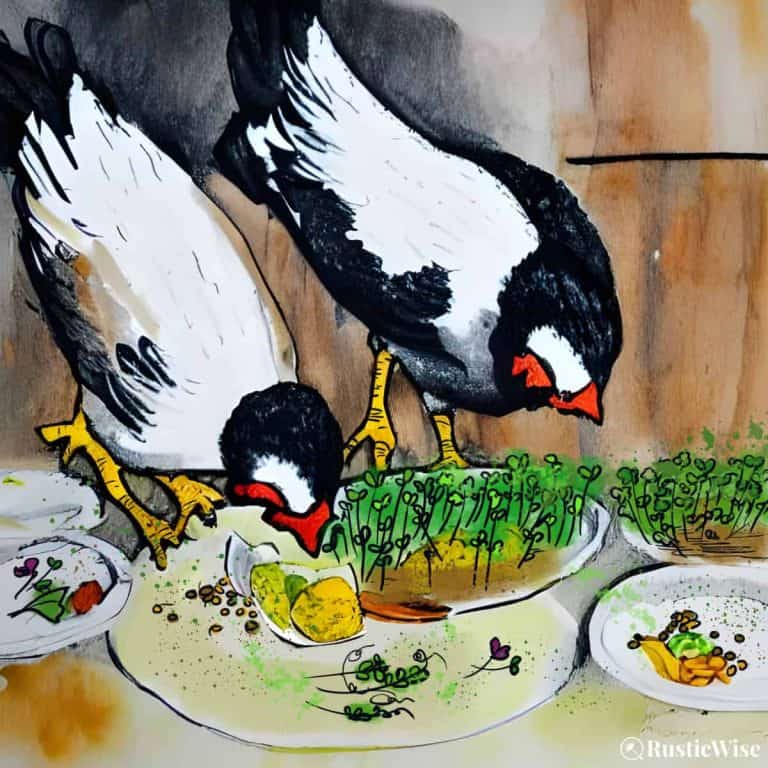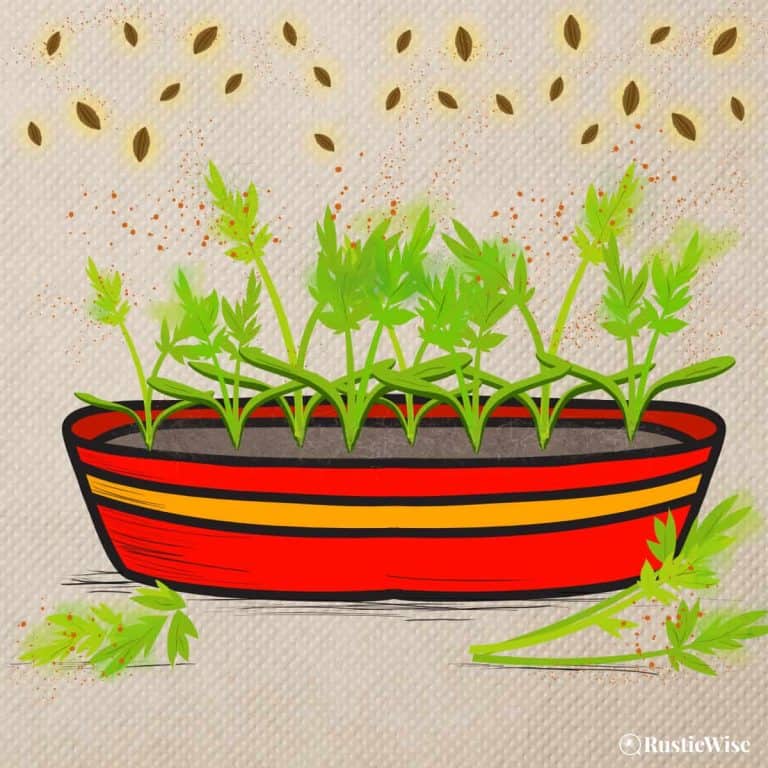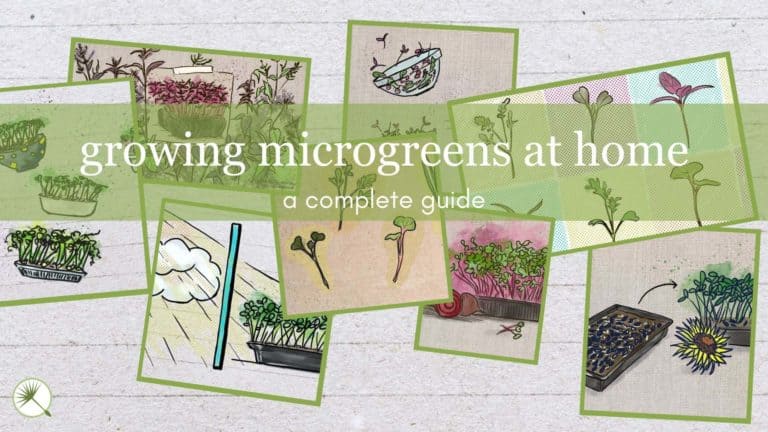A Guide To Indoor Ginseng Growing: Grow This Healing Herb at Home
Ginseng, sometimes called “green gold” is a valuable and profitable medicinal herb. Its highly prized taproots are used for a wide range of purposes, including boosting the immune system, keeping blood sugar and cholesterol levels in check, and improving brain functioning.
If this medicinal plant sounds enticing to you, we’ll go over indoor ginseng growing basics so you can try it at home. While there are different varieties of ginseng, this article focuses on growing American ginseng, which grows throughout the East coast in parts of the U.S. and Canada.
Before you get too excited about starting your own indoor ginseng farm, you should know that this plant is notoriously difficult and slow to cultivate.
Fully mature ginseng grown outdoors can take anywhere from 5 to 7 years until harvest time. Indoor ginseng can take longer—between 6 to 8 years!¹
But if you don’t mind a bit of work, and plenty of patience, you may be rewarded with a wonderful and useful herb.
“A garden is a grand teacher. It teaches patience and careful watchfulness; it teaches industry and thrift; above all it teaches entire trust.”
— Gertrude Jekyll
Ginseng 101: a quick look at this healing root
Ginseng is a perennial plant with fleshy taproots. It belongs to the genus Panax of the Araliaceae herb family of which there are 12 species.²
Asian ginseng (Panax ginseng) is from Northeastern China and parts of Korea. Sometimes called “root of heaven” (ren sheng), or “root in the image of a man” from the Chinese word jen-shen.
American ginseng (Panax quinquefolius) or (Panax quinquefolius L.) grows natively along the Eastern coast of Canada and the U.S. It grows in the provinces of Quebec, Ontario, and parts of Manitoba in Canada. In the U.S. it grows along the East coast down to the Gulf of Mexico.
Exporting American ginseng to Asia is a huge business. The practice of harvesting wild grown ginseng in many areas has led to rapid over harvesting. Now there are strict regulations in most states about the harvesting of ginseng.
The state of Wisconsin produces over 90 percent of American ginseng.³
Gingseng growers that meet stringent growing guidelines can use the Ginseng Growers Association of America (GGAA) seal on their products.
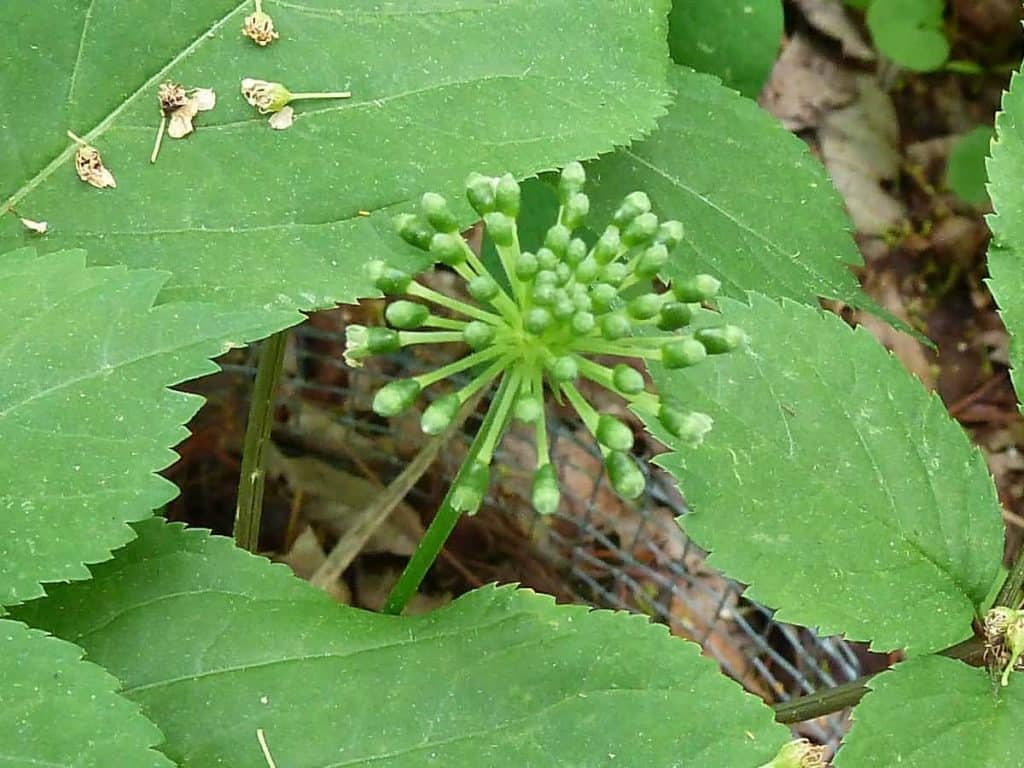
Credit: Flickr / Forest Farming
Ginseng uses and benefits
The use of ginseng is an integral part of traditional Chinese medicine (TCM). It’s thought to reduce cholesterol and blood sugar levels, boost the immune system, and enhance brain functioning.
It also has purported soothing and relaxation properties. Some believe ginseng works to boost strength. In Korea, there’s a practice of feeding ginseng to racing horses prior to competitions.⁴
The U.S. Food and Drug Administration (FDA) classifies ginseng as “generally recognized safe food” (GRAS).
As a valuable healing tonic, ginseng today comes in many forms: capsule (supplements), powder, dried, and fresh.
I love a cup of ginseng tea with a touch of honey.
Why grow ginseng indoors?
If you don’t have ideal outdoor growing conditions for ginseng (cool, shady woodland), you can always try to start this plant indoors.
Is indoor ginseng growing better than outdoor growing? Sadly, no. Ginseng cultivated indoors or even in pots outdoors probably won’t flourish like their wild grown, or outdoor planted counterparts.
However, one benefit of growing indoors is you won’t have to worry about weeding or other plants encroaching into your precious ginseng.
There’s also less chance of pest or disease problems.
If you live in an area that can support outdoor growth, you can transplant your seedling outdoors once it has sturdy growth.
If you embark on indoor ginseng growing, it should be in the spirit of fun and experimentation.
“There are no gardening mistakes, only experiments.”
– Janet Kilburn Phillips

Credit: Flickr / Biodiversity Heritage Library
A guide to indoor ginseng growing
You’ll find American ginseng growing in woodland areas under cool, shady conditions. This perennial plant ideally likes temperatures around 50 degrees Fahrenheit (10 degrees Celsius).
Most indoor room temperatures are nowhere near as cool as this. If possible, try to start your ginseng seeds in the coolest place in your home, such as a basement, cold room, or even a garage.
To have a successful start to growing American ginseng indoors, it’s best to replicate these conditions as closely as possible.
Note: You can start ginseng from seeds, seedlings/rootlets, or roots. Starting from seeds is the most common (and affordable) method, so that’s the method we’ll be focusing on below.
How long does it take for ginseng to grow?
- New seeds need stratification. They require a period of 18–22 months before they are ready to germinate. During this time, they must undergo several cool and warm cycles to prep the seed for germination.
- Stratified seeds planted in the fall will sprout in the spring.
- It can take 5–7 years until roots are fully mature and ready to harvest. Indoor ginseng can take longer—between 6 to 8 years!¹
- If you buy and plant seedlings, you can shave off roughly 2 years.
Growing ginseng from seeds
The most common (and affordable way) to grow ginseng is to start from seeds. You can buy stratified or unstratified seeds.
A benefit to starting from seed is there’s less chance of introducing disease to your plants.
While stratified seeds cost more than unstratified seeds, it’s money well spent.
Stratified seeds have already undergone the roughly 18 to 22 months stratification period required to coax the seed from dormancy.
If you buy unstratified seeds, you’ll need to bury them in sand, and expose the seeds to alternating cool and warm periods for 18 months to get them ready prior to planting!
Ginseng light requirements
If you’re short on natural light indoors, that’s alright because ginseng likes the shade. In its natural habitat, it spends most of the time under the shady canopy of forest trees.
Aim for at least 70 percent shade. Ginseng will tolerate up to 90 percent artificial or natural shade.⁴
With that said, while these are extremely low-light conditions, it doesn’t mean zero light. Ginseng will still require some light to thrive.
When’s the best time to plant ginseng?
Fall is the best time to sow ginseng seeds as it mimics the plant’s natural growth cycle in forests.
Many seed suppliers will ship seeds in the fall that should be planted as quickly as possible. Stratified seeds that have already gone through the long period of dormancy will sprout in the spring (if planted in the fall).
Note: If you don’t plan on planting right away, it’s important you keep the seeds damp (but not so wet that mold grows). Seeds that dry out likely won’t germinate. Store seeds in a cool place, between 40 and 50 degrees Fahrenheit (5–10 degrees Celsius).
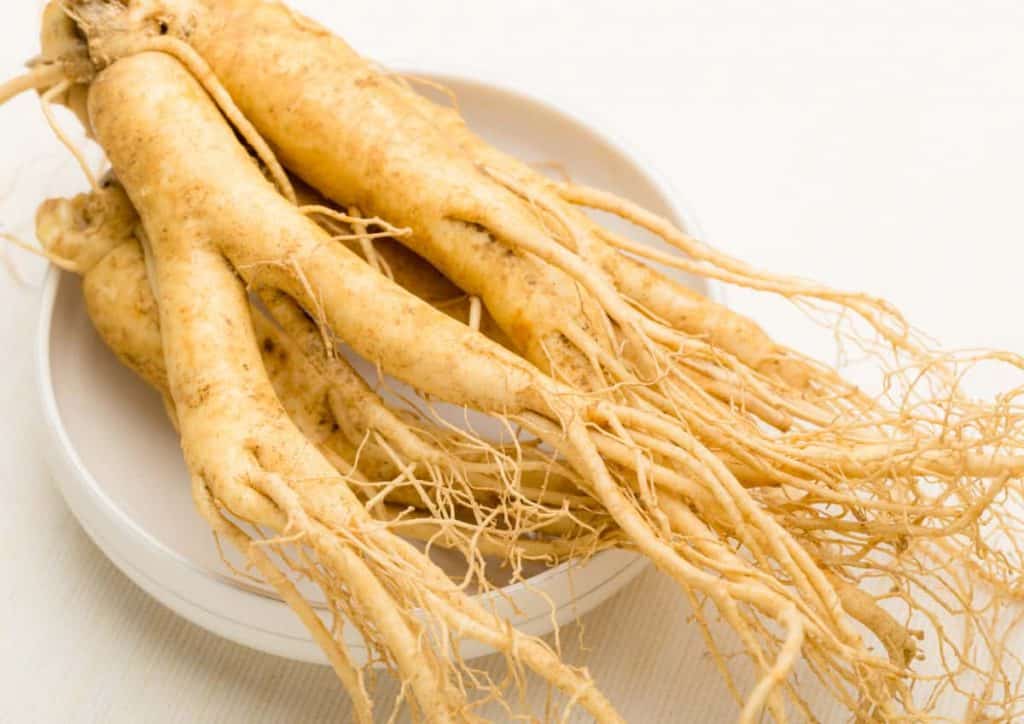
Credit: Yay Images
Sowing ginseng seeds indoors
Keep in mind that ginseng is a fickle plant to grow as many young seedlings die off, or some seeds are unviable.
That’s why it’s a good idea to start your seeds in a seeding tray first to test for viability.
Tip: It’s important with seeds that take a long time to germinate (such as ginseng), to cover your tray to keep humidity in and prevent seeds from drying out.
To get started, you’ll need:
- Good quality seed starting mix
- A planting tray with drainage holes and a matching cover (or something similar)
- A bottom tray to catch the drained water
- Prepare your planting tray by filling with seed starter mix and thoroughly mixing with clean water to moisten. The seed starting mix should be moist but not overly wet.
- Sow seeds roughly ½–¾ inch deep (no more than 1 inch deep maximum) and about 3 inches apart. Lightly cover with soil.⁵
- Cover seed tray to keep in humidity and place in a cool area of your home.
- Keep soil moist as needed.
Once seedlings have sprouted two or three leaves and are at least 2 inches (5 centimeters) tall, you can transplant them into a larger container.
Find a suitable pot or container to transplant your ginseng
Choose a pot or container with drainage holes that’s at least 15 inches (40 centimeters) across, and 8–10 inches (20–25 centimeters) deep.
Best soil for growing ginseng
Now that your seedlings are sprouting, it’s time to prepare the potted soil in a larger container.
Ginseng prefers slightly acidic soil with a pH between 5 and 6, ideally pH 5.5. It needs well draining loam soil with plenty of humus.⁴
To mimic the natural growing conditions of woodland soil, you can try to make your own mix for when your plants are ready for transplanting into a larger container.
- Quality potting soil
- Coarse sand (This should make up a small portion of the total contents. Overly sandy soil produces leggy seedlings.)
- Finely ground leaf mulch (provides nutrients and helpful microorganisms)
Once you’ve prepared your custom soil mix and filled your pot:
- Mound the soil slightly in the middle to allow good drainage.
- Plant seedlings at least 4 inches (10 centimeters) apart.
- Place a layer of natural mulch on top of the soil to keep moisture in. Leaf compost, straw, or sawdust are good options.
Ginseng indoor plant care
Getting ginseng seeds to germinate is the tricky part. Once seedlings are established indoors, the plants require little maintenance.
The most important part is to watch for any diseases or pests. Many ginseng problems are fungal. Treat with fungicide as needed.
- Keep soil moist, but avoid over watering. In its natural forest habitat, the ideal annual precipitation is 40 to 50 inches (102 to 127 centimeters).⁴
- A layer of natural mulch such as leaf compost helps keep moisture in potted plants.
- Ensure soil is well-draining to avoid root rot.
- Avoid over fertilizing the plant. Too much fertilizer can harm the roots. If you feel your plant needs some fertilizer, only apply a small amount when it’s dormant.
- Keep your plant out of direct sunlight. Expose ginseng to a tiny ray of light periodically. While it requires very shady conditions (70–90 percent shade), it still needs some light.
How to harvest, dry, and store ginseng
At long last, all your patience over the years has paid off! While it’s tempting to harvest your roots early (around the 2 year mark) avoid doing so. Ginseng roots harvested prematurely lack the beneficial qualities of fully mature taproots.
The best time to harvest mature ginseng roots is in the fall, in mid-October.
- To harvest, carefully dig out the roots, ensuring forks are intact.
- Thoroughly wash to remove surface dirt.
- Dry ginseng on racks in a well-ventilated room at temperatures of 60–80 degrees Fahrenheit (16–27 degrees Celsius) for 3 days.
- Gradually increase the temperature to 90 degrees Fahrenheit (32 degrees Celsius) for 3–6 weeks to fully cure the roots.
- Turn the ginseng roots over periodically to ensure even curing and to avoid mildew.
Store your fully dried and cured ginseng roots in a well-ventilated, enclosed container in a cool, dry place.
Ensure you keep your roots away from rodents who love to snack on your harvest!
A note on growing ginseng for profit
Are you thinking about taking your ginseng growing to the next level and begin growing ginseng indoors for profit (or outdoors)?
There are a few things you should know.
Wild grown ginseng roots are more valuable than cultivated varieties. However, there are strict regulations in place in most places about harvesting wild varieties.
If you don’t want to wait 5 to 7 years to harvest your ginseng roots, the good news is you can sell ginseng seeds and seedlings/rootlets earlier to make a profit.
By some estimates, you could earn up to $100,000 on a half-acre farm from the combined selling of seeds, seedlings, and mature roots.⁶
- Sell seedlings in Year 2.
- Most plants produce seeds in Year 3 or 4.
Related questions
Where does American ginseng grow naturally?
Found in deciduous forests throughout the Eastern U.S. and Eastern Canada, American ginseng grows naturally in USDA zones 3 to 7. Sometimes, you can find some ginseng plants growing in zone 8.⁷
Is growing ginseng illegal?
In the U.S. the harvesting of wild ginseng is strictly monitored and is illegal in some states. In other states, growing, harvesting, or exporting ginseng is banned. To check your local state’s rules, check out information from the U.S. Fish & Wildlife Service for up-to-date information. In Canada, check out the Ontario Ministry of Agriculture, Food and Rural Affairs for more information about growing ginseng.

References
- Ask Extension, Indoor ginseng #462878, https://ask2.extension.org/kb/faq.php?id=462878. Accessed March 2022.
- Britannica, Ginseng, https://www.britannica.com/plant/ginseng. Accessed March 2022.
- Ginseng Growers Association of America (GGAA), American Ginseng, https://ginsengamerica.org/american-ginseng. Accessed March 2022.
- University of Wisconsin-Madison, Ginseng, https://hort.purdue.edu/newcrop/afcm/ginseng.html. Accessed March 2022.
- Johnny’s Selected Seeds, American Ginseng Production from Seeds, https://www.johnnyseeds.com/on/demandware.static/-/Library-Sites-JSSSharedLibrary/default/dw0a99098e/assets/information/8868-ginseng-american-production-seeds.pdf. Accessed March 2022.
- Academia, Specialty Crops For Small Growers, https://www.academia.edu/7535935/Specialty_Crops_For_Small_Growers_Table_of_Contents. Accessed March 2022.
- Herb Speak, Where Does Ginseng Grow? https://herbspeak.com/where-does-ginseng-grow/. Accessed March 2022.

Author: Josh Tesolin
Josh is co-founder of RusticWise. When he’s not tinkering in the garden, or fixing something around the house, you can find him working on a vast array of random side projects.


